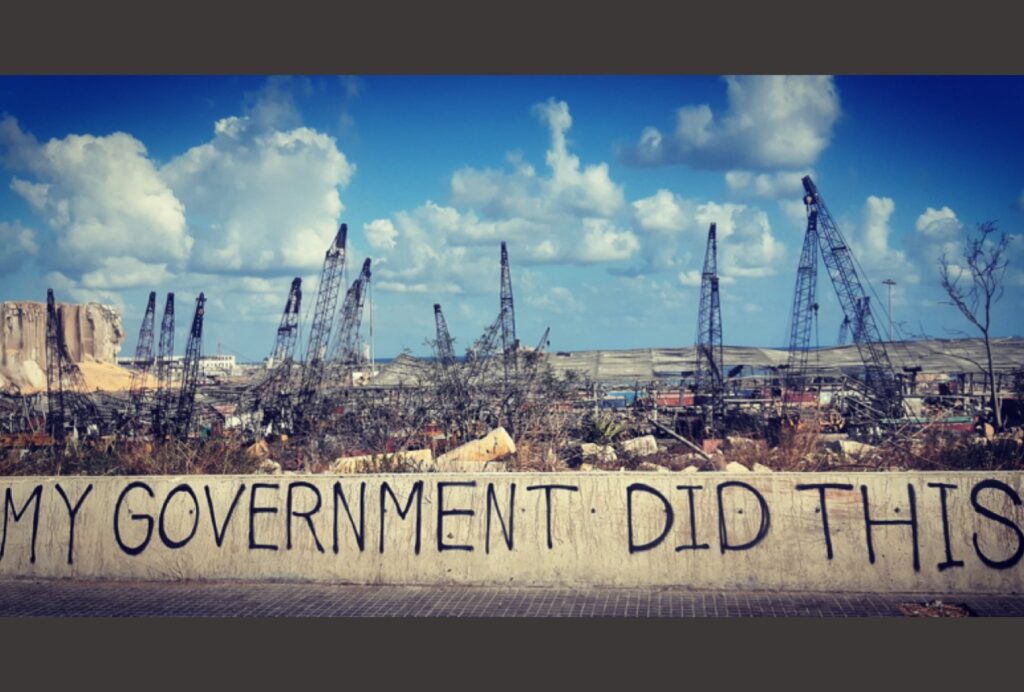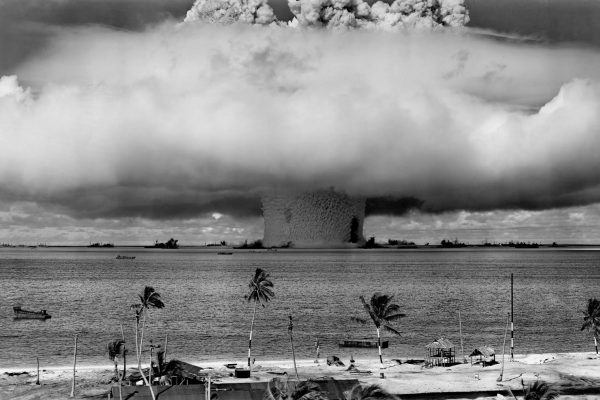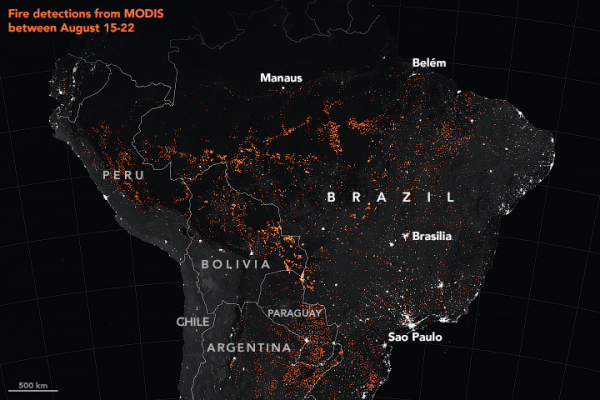By now the world has seen the apocalyptic scenes coming out of Beirut. In a matter of minutes lives were shattered, the social fabric of a city was demolished, and whole buildings were destroyed by a massive blast on August 4, at 6:07 p.m. The explosion that was felt in Cyprus 150 miles away caused at least 178 deaths (and counting), 6,500 injuries, and unspeakable grief in a country that was already suffering from unprecedented economic crisis and dysfunctional governance.
The grain silos at the port, which absorbed most of the shock, were also heavily damaged in the explosion affecting approximately 85 percent of the cereals stock in Lebanon (exacerbating the already soaring price of food). In addition, some 120 schools serving 55,000 students have been affected, along with innumerable small businesses, private medical clinics, pharmacies, art galleries, thousands of buildings, among them hundreds of architectural and cultural significance, and 300,000 people are now homeless.
The cost of the devastation is estimated to be in the tens of billions. It will likely take weeks, if not months, before funds from aid campaigns are disbursed.
While many questions remain unanswered, one thing is clear. In 2013 a Moldovan registry ship, the Rhosus, coming from Georgia en route to Mozambique with onboard almost 3,000 tons of bomb-grade ammonium nitrate managed to get docked at the Beirut port for questionable motives. As per Lebanese laws, without an approval of the cabinet and the ministry of the interior, docking or even allowing the transit of such explosive and hazardous material is illegal. Nevertheless, as reported in the New York Times, a Russian businessman, whom the crew believed was the owner of the ship, instructed the Russian ship captain to make “an unscheduled stop to Beirut to take on additional freight,” and the ship managed to get its cargo delivered, so to speak, after it was discovered to be leaking and therefore unseaworthy. The ship and its crew were ultimately abandoned by the unknown legal owner of the ship, and every single political administration after the one that oversaw the arrival of this cargo was aware of the ammonium nitrate and did nothing to remove this time bomb from a densely populated area.
One narrative—claiming that fireworks ignited the huge stockpile—has several inconsistencies. First, if every authority from the president to customs officials at the port knew about the existence of such dangerous material, why were fireworks stored nearby? Furthermore, there were two explosions. The first one followed an initial fire that is yet to be explained (authorities have suggested unsupervised maintenance work, others have speculated an intentional fire). What ignited the larger, second explosion also remains unknown; some have suggested munitions and missile fuels, and a few have suggested more dangerous weapons. The latter explanation has been advanced given the distinctive pattern of the explosion: a massive cloud known to military researchers as a Wilson or condensation cloud, expanding outward with shock waves sweeping everything on its way up to 6 miles per second. More recent seismological data has revealed that small blasts occurred before and after the main explosion may be suggestive of detonating munitions. In any case, based on the 405 foot wide and 141 foot deep crater it left behind, experts have estimated that the explosion was equivalent to the detonation of 300 to 400 tons of TNT, making the Beirut explosion among “the biggest non-nuclear explosions of all time.”
French investigators as well as FBI agents have been dispatched to help with the Lebanese investigation. Yet it is not clear if the evidence will ever be shared with the public and on what basis these various investigators will collaborate and assist the contested local investigation. Given that the ruling class accused of corruption and ineptitude hast lost all legitimacy since a popular uprising erupted in October 2019, activists, protesters, and the victims and families of the victims have asked for an international and independent investigation into what they say was a crime committed by the ruling political class against its own people.
A major donor conference in Paris pledged nearly $300 million in immediate support. The United Nations has also made an appeal for an additional $565 million with an estimated $86 million for the health care sector. Meanwhile a needs assessment is quickly being put together for the rehabilitation of Beirut and before another major international donor conference is set to take place in September.
These are important sums, but they barely meet the cost of the devastation estimated to be in the tens of billions. In addition, truth be told, it will take weeks, if not months, before this immediate or long-term aid is disbursed because money has to be raised in the first place, needs have to be rigorously assessed, beneficiaries will have to be “vetted” and the United Nations, which will be coordinating this international effort, is, alas, notoriously slow.
Volunteers have shown it is possible to do something on the ground, quickly and efficiently. They have also demanded that the international community bypass corrupt state institutions and deliver aid directly to civil society.
But there is hope if enough people get mobilized. Civil society has shown the way forward, filling the void of a nonexistent and incapacitated state. Strangers helped the wounded, consoled and took care of children whose parents were killed in front of them, and youth armed with brooms and gloves have rapidly mobilized to clear the debris. Thousands have volunteered to help families in need, distributing food and water to the displaced, and several “tents” in down town Beirut have been erected in what volunteers refer to as the “base camp” to help in the relief efforts of the 300,000 families that have become homeless in a matter of minutes.
In the camp there is a section for food (managed by a local NGO called the Lebanese Food Bank), one for the Lebanese Red Cross, other local NGOs such as Arcenciel that distribute medications, food and help in clearing the debris or Beit el-Baraka that support poor and retired people with no socioeconomic security. Engineers and architects have volunteered to help assess the stability of buildings. By August 14 some 1,200 buildings have been assessed and 600 wooden doors replaced. Victims of the blast have mobilized to document testimonies of people’s traumatic experiences, the damage done to life and property, the violence that has pierced through the intimacy of every home, every human body, and every family.
Volunteers have shown it is possible to do something on the ground, quickly and efficiently. They have also demanded that the international community bypass corrupt state institutions and deliver aid directly to civil society—a process that, it is hoped, would guarantee that aid reaches the people rather than fall in the cronyistic network of the ruling class that is known to have misused donors’ money in the past. While there is still no mechanism to transfer this aid directly to the civil society, this should be a lesson for us all. Each one of us, as citizens of the world, can help bring some hope to this country and start amending broken minds and souls. This comes in the form of donation but also solidarity with the ongoing revolution to oust a corrupt, inept, and kleptocratic political ruling class. This also comes through our collective efforts in reimagining humanitarian aid as complementing agencies (international or otherwise) in directly assisting people in need.
Where to start given the overwhelming needs of this afflicted nation? We should begin by getting some of the severely destroyed hospitals back in action as soon as possible, especially as the country enters a second surge of COVID-19 infections with a dramatically reduced number of hospital beds and pandemic-equipped intensive care unit facilities that have been destroyed.
According to the Lebanese Order of Physicians, two thousand medical doctors have been physically injured in the explosion. Most hospitals were also affected, some more than others. The Children’s Cancer Centre of Lebanon at the American University of Beirut shared devastating pictures of the scale of the destruction on social media. The Hôtel-Dieu de France, a main referral hospital affiliated with the Université Saint Joseph has also sustained some damage with collapsed ceilings and broken glass. One upsetting picture of its overwhelmed and chaotic emergency department moments after the blast has been circulating widely on social media.
We should begin by getting some of the severely destroyed hospitals back in action as soon as possible, especially as the country enters a second surge of COVID-19 infections.
But four hospitals and twelve primary health care centers have been severely damaged and rendered inoperable, accounting for over six hundred hospital beds lost according to the World Health Organization including two equipped units to isolate and treat patients with COVID-19, diminishing the already insufficient number of intensive care units. The four hospitals are located in contiguous districts directly facing the port about a mile from the blast. Though the Hôpital des Soeurs du Rosaire was the closest to the Beirut port and Karantina (the Beirut Governmental Hospital) the most exposed, Saint George as well as the Lebanese Hospital Geitaoui—both university hospitals—sit on a hill facing the port and hence were equally vulnerable to the powerful shock waves that ravaged the city. The day of the blast these hospitals were so damaged that they had to shut down completely, though the Lebanese Hospital Geitaoui managed to salvage its dialysis unit, which it reopened forty-eight hours later. All four hospitals are non-profit.
The Saint George Hospital-University Medical Centre was founded in the nineteenth century by the local Greek Orthodox bourgeoisie; today it is owned by the Greek Orthodox Church. The hospital, which had around 250 beds before the explosion, is affiliated with the University of Balamand, which was founded by the Orthodox Patriarch Ignatius IV of Antioch in 1988. In addition to losing thirteen people the day of the explosion, including patients as well as family members who were visiting sick relatives and medical personnel (four nurses), the entire structure has been severely damaged. The day of the blast cancer patients on the ninth-floor half a mile away from the port received the most severe blow with witnesses describing scenes of horror as medical doctors were unable to reach patients because of blown-up elevators and inaccessible stairs.
The Karantina or Quarantina hospital takes its name from the area, which was originally a lazaretto—a quarantine station—created in 1835 by the Ottoman Governor of Egypt Ibrahim Pasha as a way to stop the plague that was ravaging cities across the Mediterranean. The area is a poor neighborhood of Beirut and has always been a refuge of sorts for the persecuted: Armenians who fled Turkey after their massacre in 1915, then Palestinians after their exodus in 1948 following the creation of the State of Israel. The current Karantina (Beirut Governmental Hospital), which has around thirty beds and caters to the poor, was built in 1955. And consistent with the history of the region as one of frequent epidemics depending on the historical and geopolitical circumstances, a tuberculosis dispensary was first installed, then a typhus unit. But the Karantina is also famous for a notorious massacre of Palestinians by the Christian militia (Kataeb) during the civil war that ignited in 1975. As well as being a dumping ground for “wasted lives” to borrow the term from Zygmunt Bauman, it is also a dumping ground for solid waste. According to the United Nations, medicines and supplies from the damaged Ministry of Public Health’s warehouse in Karantina have been relocated to a safe location, though it is not clear how much of the medicine stock was affected. On the day of the blast its full neonatal intensive care unit was completely destroyed and 8 premature babies survived unharmed protected by the incubators.
The Lebanese Hospital Geitaoui-University Medical Center was founded in 1927 by father Joseph Selwan Geitaoui, a Maronite priest, who later entrusted the hospital administration to the Congregation of the Maronite Sisters of the Holy Family, itself established by the Maronite Patriarch Elias Hoyek in 1895. Today its board of directors is headed by Superior General of the Maronite Sisters alongside the Dean of Faculty of Medical Sciences at the Lebanese University. It is a hospital of many “first” in Lebanon. The first hemodialysis unit (1969), the first CT scanner imaging center (1981), the first lithotripsy center (1988), first MRI equipment in Lebanon (1991). The Geitaoui hospital also boasts the only center in Lebanon and one of the few in the region for the serverely burnt patients. It is one of the 5 largest medical hospitals in Beirut (260 beds, 720 health care workers, 89 medical residents affiliated with the Lebanese University, 140 medical doctors), serving almost 20 percent of the city’s population (the working class and an impoverished middle class). Immediately after the blast, its dedicated staff worked heroically to save lives and treat hundreds of wounded in makeshift parking lot facilities. Despite all efforts, twelve patients died.
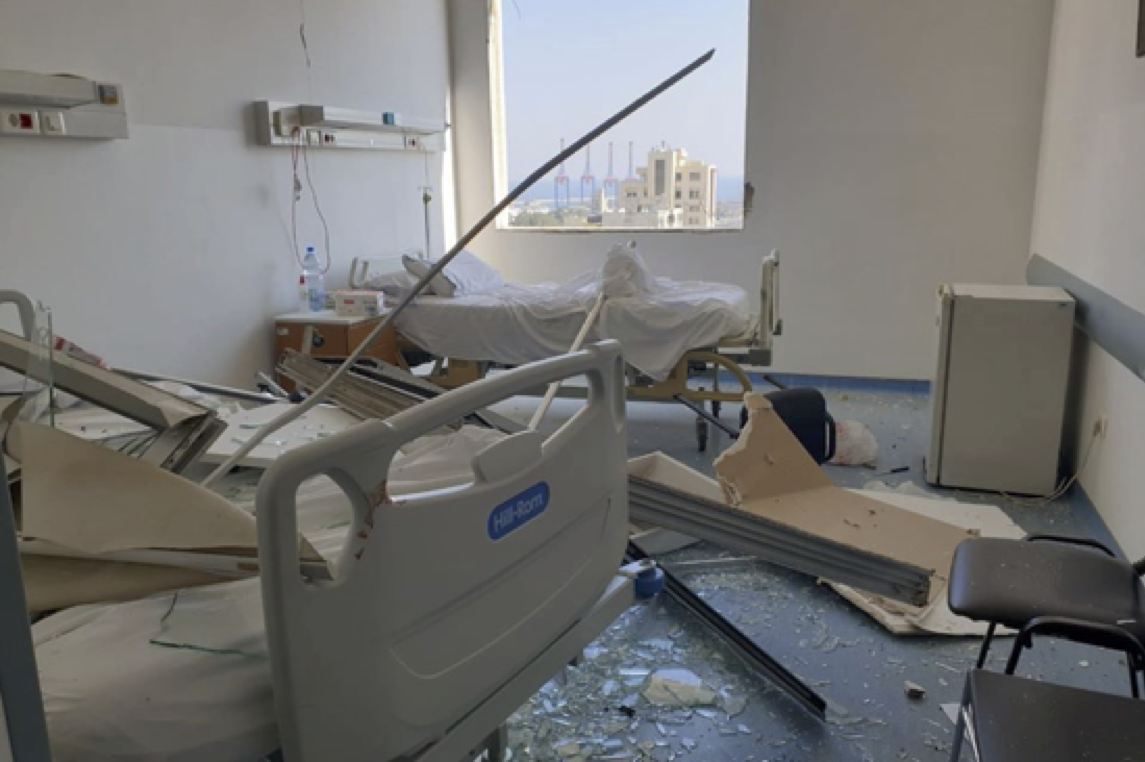
Although the Hôpital des Soeurs du Rosaire is the newest hospital among the four severely damaged hospitals, the sisters who manage the hospital have been involved in medical and charitable activities in the Near East since the nineteenth century. The Rosary Sisters as they are called are part of a religious Catholic congregation known as the Rosary Sisters of Jerusalem (Sœurs du Saint Rosaire de Jérusalem des Latins) founded in 1880 in Jerusalem by Joseph Tannous Yammin, a Palestinian priest of the Latin Patriarchate of Jerusalem. The sisters decided to have their own hospital, which they bought in 1986, originally a hospital of 50 beds. The Hôpital des Soeurs du Rosaire was completely renovated in 2012 and before the blast had expanded to a 200 bed facility and boasted the only referral centre for breast cancer in Lebanon. The day of the explosion a nurse was killed and everything inside the hospital, from medical equipment, to doors and elevators, was pulverized. Looking at the ruins, Sister Clothilde confided to a French magazine, “we all seem to be condemned to death in this country.”
It is revealing that many Beirutis thought the explosion was just another air strike or bomb. Lebanon has normalized assassinations, air strikes, and other forms of violence perpetrated against its own citizens since the Syrian occupation of the country in 1975 until the latest disastrous war between Israel and Hezbollah (an Iranian-backed armed group) in 2006. There are many examples of cataclysmic explosions in the recent history of the country. In 2005 a massive car bombing in killed former prime minister Rafik Hariri and twenty-one others, injured more than two hundred people, and left a massive crater in Beirut’s waterfront area.
At the time of that explosion, I was a fourth-year medical student at the American University in Beirut. The few minutes following the blast, which we felt on campus a mile away, a couple of friends and I instinctively started to run to the emergency department of the university’s hospital to try to assist medical staff. The sight was horrific and unforgettable: glass shards lodged in bodies, amputated body parts, and charred corpses. The events are linked in another way: a few days after the most recent Beirut explosion, the international court at the Hague was supposed to deliver its verdict on the Hariri assassination. The judgment was postponed to August 18 “out of respect for the dead.” (One Hezbollah member received a guilty verdict; others were acquitted.)
But the closest example to the Beirut blast in recent history—but which few remember, perhaps because it concerned ordinary citizens in a lawless land—is an explosion on June 18, 1991, at around 3 p.m., two years after the Taif accords (an agreement signed by the various warlords in the Saudi city of Taif that allegedly concluded the fifteen years of civil war). The horrific explosion, which almost killed my family, our neighbors, and other bystanders, detonated around 200 tons of explosives and munitions owned by a Christian militia (the Lebanese Forces) and stored in a residential area. We miraculously survived, though some of us with life injuries, not to mention the indelible trauma that such an experience engraves in your memory. Our home was completely destroyed, along several others.
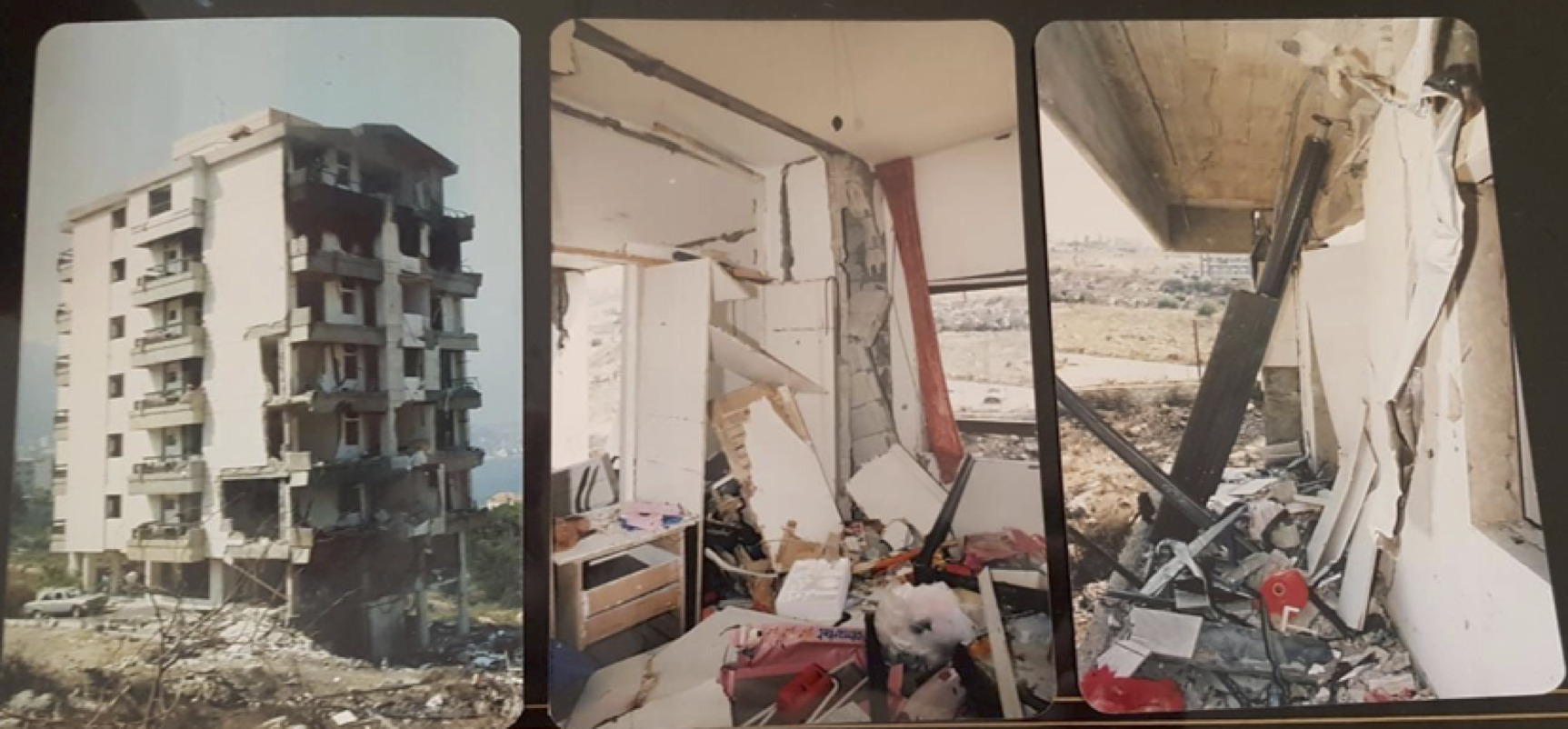
Was this incident merely accidental or the result of a premeditated criminal act? We still don’t know. The state being nonexistent, no serious investigation was conducted. No compensation, beyond a contribution to minimally repair the infrastructure of the building, was provided. No one was arrested. No one was prosecuted. This lack of accountability was a natural outcome of the way the civil war—which had killed more than 100,000 people, injured thousands, and caused the displacement of two-thirds of the population—was concluded. “La ghalib wa-la maghlub” (no victors, no vanquished)—the principle that shaped the amnesty law of 1991—was endorsed by all the warlords, including many who are still active in politics today despite pretending being on the side of the ongoing protest movement. This principle basically engrained impunity into the new postwar social contract marking out the fledgling republic.
In retrospect, the 1991 explosion was an omen of the Beirut disaster unfolding today and to the entrenched sense of impunity and criminal behavior of a political class that has been ruling this country far too long. As with the 1991 explosion, no crisis unit was put in place in the wake of the Beirut explosion, and an amateurish rescue effort characterized the primitive reaction of this pseudo-state that Lebanon has, alas, become. And yet despite the unspeakable suffering and indescribable destruction that such a caesura has caused in the collective conscience, I still believe that demonstrating that the citizens of the world care about the people of Beirut could restore hope, before it is too late.
